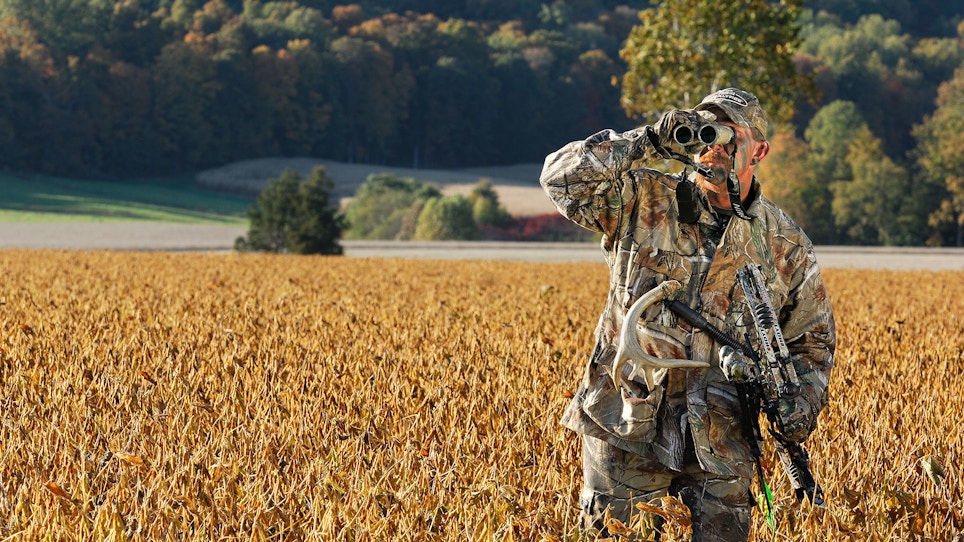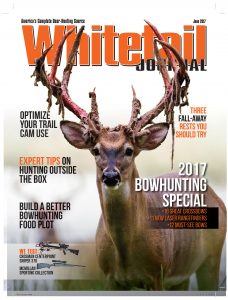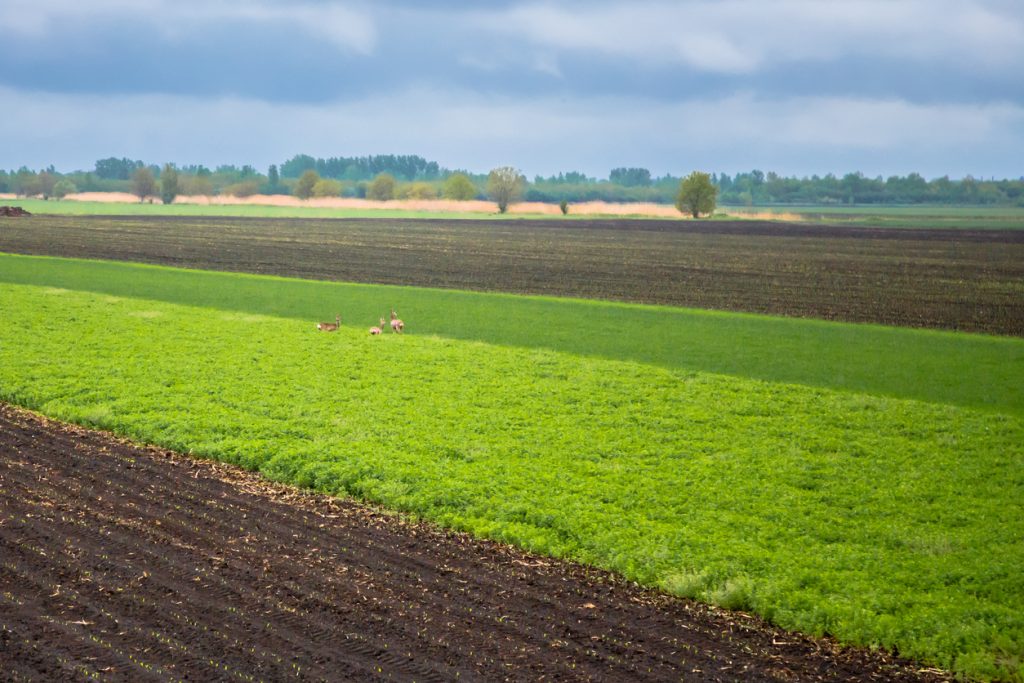There you stand, bow at the ready, trembling as you wait for the buck of a lifetime to take a few more steps. He’s right there, just out of range, casually feeding on the clover and wheat you spent so much time planting a month ago.
Minutes feel like hours as the buck inches farther away from your stand. As darkness closes in, it becomes clear you won’t get a shot. Bad luck? Nope. It’s your fault. You built a great food plot, but you didn’t consider that there are two kinds of food plots — those made for rifles and those designed and built specifically for bowhunting.
Virtually any food plot will do for rifle hunters. Bowhunters, however, need to take careful consideration of everything from shooting distance and prevailing wind direction to the time of year and even deer behavior.
Get In Shape
Instead of disking a random amount of dirt in a random shape and then throwing down some random seed in August or September, put some thought into your plots. Plan them not just from a hunter’s perspective, but from a bowhunter’s perspective.
First, bigger isn’t necessarily better. It’s the shape that matters. As a general rule, a great all-purpose shape for bowhunting is an oval or hourglass that narrows to no more than 30 or 40 yards in the middle. That dumbbell or kidney-shape pinches deer into a bow-ready kill zone as they move from one end to the other. Rectangular plots can serve the same purpose and they can work well on power line right-of-ways, logging roads and other linear areas. The key is to keep them narrow enough that a passing deer will have to walk within range.
Size does matter for one important factor: The number of deer on your land. A ¼-acre plot may not have any food left when bow season opens if you have a high density of deer. If that’s the case, build larger plots or consider using plants that produce a large amount of forage.
A better option, and one that will give you more time in the woods, is to build multiple plots. Two, three or more plots not only provide abundant forage, they’ll give you more places to hunt as the conditions, like wind direction, change. Multiple plots also allow you to rotate pressure. Nothing pushes deer to a nocturnal schedule faster than excessive hunting pressure. Tuck one deep into your property and leave it alone until the late season and you’ll have your own hotspot when other hunters are staring at empty fields.
If you don’t have the option of building multiple plots, create one that uses as much space as possible while still allowing you an ethical shot. An acre is about the size of a football field — 100 yards by 52 yards wide — which is a bit large for bowhunting. Squeeze it down at the middle to 40 yards or less and pull the ends in to about the same distance, as well. That is, assuming you have a suitable tree for a stand in the middle.
That leads to another factor to consider: Build the plot around your potential stand sites instead of searching for the perfect tree after you build the plot. Factor everything from prevailing wind direction and rising and setting sun directions to the potential travel routes of the deer on your land. Build bow plots downwind of known bedding areas if you have the option.
Of course, your options may be limited. If your only choices don’t come with a ready-made treestand site, consider some sort of bow-capable ground blind. They not only allow you to hunt in the best location, they are mobile, which gives you the opportunity to move to the best spot as conditions change.
The Right Stuff
What you plant is somewhat less important than where it is planted. Every commercially available food-plot plant will attract deer. However, all have benefits and drawbacks. Cereal grains like wheat and oats, for instance, are great early-season plot plants. Both germinate quickly, grow in a variety of soils and climates, and provide a large amount of forage for a relatively low cost. What’s more, cereal grains will attract deer throughout the season, even during the late season when native foods are depleted.
Beans are an excellent early-season plant. A smaller soybean plot won’t last long in areas with lots of deer, though. They’ll either eat the plants before they have time to mature or they’ll devour the plot before the season opens.
One solution is to encircle the plot with a temporary electric fence. A single-strand, solar-powered fence can provide enough of a deterrent to give your bean plot a boost until hunting season. You’ll want to take the fence down a few weeks before the season so the deer can get used to the new food source.
Another option is to plant a larger plot. That may put you in a predicament as some deer may not feed within range. However, having abundant food throughout the season will keep deer on your land longer. It’s a trade-off you’ll have to calculate based on your own situation.
Don’t rely on a single food-plot plant, though, even if you only plan to hunt the early bow season. Deer don’t eat just one type of plant. They readily eat a variety in a single day. The more options they have, the more likely they are to stick around.
Pre-packaged annual blends like Whitetail Institute’s Imperial No-Plow, a mix of annual clovers, brassica and cereal grains, including wheat and oats, are excellent choices and provide food sources for the entire hunting season. Perennial white clover plots are great for early-season hunting. They tend to be more shade-tolerant than many other choices, but clover can go dormant during the coldest part of the winter, leaving you with a foodless food plot in December.
If you choose to plant perennial clover, consider top-sowing wheat or oats in early September to give your plot an added food source. The clover adds nitrogen to the soil, and both types of grasses thrive with the extra source of nitrogen. Even better, both plants are annuals and will die after they mature the following spring.
Hunt It Right
Depending on the size, it’s a good idea to place more than one stand over the plot. Putting a single stand in the pinch point is a great way to steer a buck under your tree, but deer don’t always feed from one end of a food plot to the other. They sometimes barely move at all.
That’s why it’s not a bad idea to erect two or more stands. Depending on the size and shape, the best locations could be on either end or they could be diagonal from each other. Multiple stands allow you to hunt the right one based on wind direction. Also, deer learn which sections of a food plot contain the plants with the highest nutritional value and will often spend most of their time feeding in that higher-quality food. Differences in soil will produce better, more attractive plants, even when you use adequate lime and fertilizer. Careful trail camera monitoring can help you locate the section of a larger plot that deer seem to prefer.
One stand or five, there’s no better way to burn up a food plot than by overhunting it. A study in South Carolina found that mature bucks will avoid food plots after they’ve been hunted just a few times. It also found that daytime visits by those bucks inched upward when the stand was allowed to rest for several days. In other words, the more time you stay out of a stand, the better your odds of seeing deer when you do hunt it.
That’s especially important during bowseason when opportunities don’t come often. However, if you build a plot just for bowhunting, you’ll automatically boost your chance of success when that buck does walk into the field.








